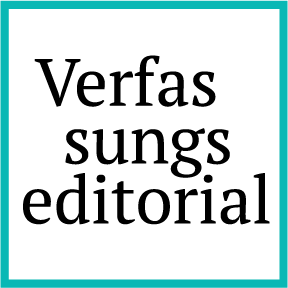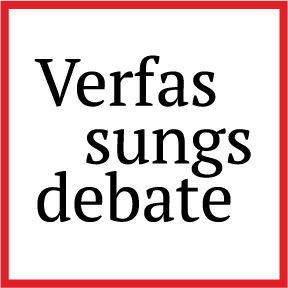The Hungarian Roadmap
Eight Lessons on Academic Freedom From a Hungarian Perspective
The Hungarian play script of infringements on academic freedom under the Orbán-regime provides useful junctures on how academic freedom can be both captured and conceptualized. I speak from first-hand experience. As I have chronicled before, I was fired from one university for political reasons; laid off from another after it was forced into exile; and have been working at an institution that has been renamed five times, reorganized, and put under continuous existential pressure since 2010.
Threats to academics and academic freedom in Hungary are mild compared with China, Turkey, or Brazil: We have not witnessed physical atrocities, incarceration, deportation, the withdrawal of travel documents or even large-scale firing. Still, five years after the Lex CEU case, it is safe to say that academic freedom is systematically being violated in Hungary. Its roadmap has at least eight lessons to offer.
Number 1: Step by step
First, and most broadly, the Hungarian case shows that hybrid autocracies do not necessarily infringe upon fundamental rights and individual freedoms blatantly or directly. Instead, they pursue cultural hegemony incrementally by tightening control over academic institutions as part of their broader illiberal strategy. We should thus pay attention to detail and take note of how seemingly small steps may lead to systematic change.
The Hungarian government gauged academic freedom in all of its three dimensions: teaching, research, and publishing. It transformed an entire web of independent research institutions operating under the auspices of the Hungarian Academy of Sciences into a government-controlled entity. It took over national science and culture funds. It allowed government agencies to refuse to provide data to NGOs and levy excessive charges for public data requests. It censored publications and academic events. Its affiliated media orchestrated smear campaigns to intimidate government critics. It cut and divested programs from state-funded institutions. It forced the Central European University (CEU) into exile, and semi-privatised the vast majority of the higher educational sector. Within a few years, the ratio of students studying in traditional state-owned institutions dropped from eighty-seven percent to twenty-two percent, and more than twenty universities were remodeled, leaving only four in state ownership. As a result of the “model change”, as the government coins it, university employees lost their civil servant status, reducing job security and making academic staff more vulnerable to dismissal. The European Commission stated that these structural changes seriously threaten the right to academic freedom enshrined in Article 13 of the Charter of Fundamental Rights. These newly formed public interest asset management foundations are exposed to the direct or indirect influence of the executive branch, which is incompatible with academic freedom. After unsuccessful negotiations the EU precluded these universities from participating in EU-funded academic networks such as Horizon Europe and Erasmus+.
Number 2: Public education is important
A second lesson from the Hungarian academic freedom saga is the need to monitor developments in public education as closely as those in higher education and research. Alongside developments in higher education and research, the Orbán-government centralised the entire public education curriculum, adopting a mandatory, ideologically biased framework which only allows very little flexibility. The measures abolished the textbook market and schools no longer have the opportunity to implement pedagogical strategies adjusted to students. It also attacked the institutional framework of primary and secondary education by changing the legal status of education workers, triggering years of protests, rallies and strikes. The new law introduced a novel disciplinary regime involving the suspension of salary payments and potential sanctions including dismissal if teachers openly criticise the education system. Finally, it took over schools previously run by local governments and instituted sweeping reforms regarding school administration appointments. While the Charter protects academic freedom (Art. 14) and the right to education (Art. 13 I) separately, the Hungarian case shows how deeply interconnected they are in practice. Restrictions on one form of education will usually occur alongside restrictions on the other.
Number 3: Diversified infrastructure builds resilience
As a third lesson, the Hungarian-case highlights the importance of independent national public research institutions in supporting academic freedom. The volatility of universities can be counterbalanced by a more diversified and thus more resilient academic infrastructure. Debates over the recent transfer of four Hungarian research centres revealed that systematic basic research and the stewardship of cultural heritage are often better anchored in a national academy of sciences than in public universities, whose priorities and stakeholders differ. Universities devote significant resources to teaching, with research and knowledge production often framed as complementary to instruction and funding. In most countries, national science funds – or their equivalents – are the primary custodians of national scientific research, providing grants on a meritocratic, individual, and often ad-hoc basis. The choice of which fields receive support tends to follow the shifting preferences of donor bodies, contemporary priorities, and the perceived industrial or market potential of science. By contrast, institutions such as the Hungarian Academy of Sciences are rooted in the 19th-century logic of nation-building. They are not only charged with advancing diversified, cutting-edge research, but also with safeguarding national academic archives and sustaining basic research in areas that may lack immediate market value yet preserve cultural heritage over the long term. Such institutions thus provide an essential counterweight to short-termism in higher education and research policy.
Number 4: Academic freedom requires access to justice
The fourth point accentuates the role of access to judicial remedies for violations of academic freedom. The ECJ-judgment in the Lex CEU case – though neither a game changer nor exempt from criticism – points to the importance of multilevel constitutionalism, providing additional layers of judicial review over potentially captured courts. Seemingly unrelated questions of judicial procedure can likewise have direct implications for academic freedom. Recent reforms to Hungarian civil procedure law, which removed earlier caps on representation fees, have opened the door to a broader acceptance of market-based legal costs. As a result, public authorities are no longer represented by civil servants, but increasingly by expensive, government-aligned law firms. As a result, victims of academic freedom violations risk incurring heavy debts if their claims are unsuccessful. This has already happened to several teachers who were dismissed for participating in protests. So, for academic freedom to function as a fully justiciable right, procedural conditions of access to justice must also be safeguarded. Excessive financial risks are particularly chilling for academic freedom because, as in many strategic litigation cases, petitioners often seek more than reinstatement after dismissal: they pursue the symbolic vindication of academic freedom as a principle. Precisely because such claims derive their force from their expressive and precedent-setting value, they are especially vulnerable to procedural disincentives, with the threat of heavy financial liability likely to deter their pursuit.
Number 5: Victims can be perpetrators too
As a fifth lesson, illiberal regimes often weaken academic freedom not only by repressing universities but also by co-opting parts of the sector through selective funding. In Hungary, the Orbán government simultaneously starves independent universities while showering regime-friendly institutions with resources, turning parts of academia into willing collaborators in its illiberal project. On the one hand, chronic underfunding and dismally low public pay scales leave many universities and scholars vulnerable: In 2024, under the public pay scale, full professors earned around €1,900 per month and assistant professors about €950 – sometimes less, once adjusted for inflation, than the salaries of kindergarten teachers. On the other hand, massive subsidies and structural incentives are channelled to government-aligned institutions, often through the privatisation of universities into nominally public foundations, thereby distorting the academic labour market and consolidating political control. Crucially, these transfers typically required formal endorsement by university senates, creating the appearance of academic self-governance. In one striking case, the rector-elect of Eötvös University – the country’s largest but severely underfunded public university – initiated the annexation of 1,200 former Academy of Sciences researchers to an already overstretched faculty of 5,000, without clear long-term financial guarantees. The incentives were obvious: financial benefits and the threat of further cuts if the transfer were resisted. Similar pressures have pushed research universities toward “model change,” even at the cost of losing access to EU grants. Yet for those that complied, budgets often doubled or even quadrupled, and salaries rose significantly. Striking examples include the University of Tokaj – funded with nearly €2 billion for just a few hundred students and staff – Ludovika University, Pallasz Athéné (later János Neumann) University, and above all, Mathias Corvinus Collegium, which received €1.3 billion, which is more than the entire annual budget of the Hungarian higher education sector. So, what emerges from systemic underfunding and selective generosity is a dynamic where institutions adapt to survive, yet in doing so help entrench the very political order that undermines their autonomy.
Number 6: Authoritarian populism harms “the people”
Sixth, the Hungarian case shows that populists rarely serve the actual needs and interests of the “people”, in our case stakeholders in academic life. Most Hungarian students and faculty have been excluded from Erasmus-programs, and research grants have been cut off. For 34 institutions, including 21 universities, this meant losing over 60 million euros under Horizon Europe alone, and the freezing of Erasmus+ projects affected 182,000 students. This, of course, fits the illiberal government logic well: without EU funds, research and learning is limited to what the government subsidises and controls. At the same time, the government promotes selective internationalisation. The so-called illiberal axis manifests in academia, too. While the Hungarian government has closed its borders to asylum seekers and refugees, dismantled humanitarian protections, and cultivated a hostile public discourse around migration, it simultaneously promotes selective migration pathways that serve its strategic and economic goals. It has welcomed international students, particularly those arriving through the state-sponsored Stipendium Hungaricum program, aimed at strengthening partnerships beyond the European Union, particularly with countries in the Global South. Countries such as Syria, Pakistan, Iran, Iraq, Palestine, Nigeria, and Ethiopia are especially well represented among the participants.1) In this way, academic mobility is not abandoned but reengineered: Hungarian students and faculty are cut off from European opportunities, while international exchanges are redirected to serve the regime’s geopolitical ambitions and reinforce its illiberal project.
Number 7: The costs of repression are more than legal
Seventh, about damages: academics under illiberal regimes face a spectrum of external and internal pressures that erode both individual well-being and institutional integrity. Psychologically, they may endure harassment, intimidation, and tax raids. Existentially, they face blocked career advancement, layoffs, and exclusion from travel grants or other subsidies. Institutionally, they confront threats to the accreditation of programs, departments, or even entire universities. Internal pressures, meanwhile, often result in self-censorship. The consequences are manifold: bureaucratic harassment drains time and energy, institutional uncertainty paralyses planning, grant applications, and recruitment, and chronic stress diminishes the quality of both teaching and research. Many of these harms can be legally framed as infringements of academic freedom: the freedom to research and the autonomy of institutions are core pillars of that right. Yet not all costs are reducible to legal violations. Being an academic is a profession with long-term investment and a gradual development of profiles and identities. Losing one’s particular appointment may be a reasonable risk in the academic job market but being ostracised systematically puts academics in great peril.
Also, infringement on academic freedom disproportionally targets junior faculty and, usually, women, and in a country like Hungary, further accelerates the widening of the gap between the central and periphery, and has a devastating effect on national (local, regional) academia and science.
Number 8: Solidarity and resistance
A final, eighth caveat: illiberal regimes will weaponise the principle of divide et impera. In Hungary, the reorganisation of the Academy of Sciences’ research network delivered a potentially fatal blow by pitting the STEM disciplines against the social sciences, humanities, and the arts (SHAPE). Humanities and social sciences were relegated to a financially struggling university – feared to be facing its death sentence – while the former were promised substantial funding increases. This strategy fractured solidarity and stifled meaningful resistance.
Institutional freedom and autonomy are ultimately operationalised by individuals, and it comes down to personal freedom and autonomy. Being an academic in illiberal regimes thus not only comes with existential threats, but also with heightened responsibilities, and occasionally tauntingly hard choices – such as deciding whether to fight for academic freedom from within institutions already compromised by illiberal capture.
References
| ↑1 | See Árendás, Zs: Student Mobilities to an ‘offbeat’ or ‘onbeat’ destination? The Stipendium Hungaricum Scholarship Programme in Illiberal Hungary. European Journal of Education (forthcoming). |
|---|
FOCUS is a project which aims to raise public awareness of the EU Charter of Fundamental Rights, its value, and the capacity of key stakeholders for its broader application. Views and opinions expressed are however those of the author(s) only and do not necessarily reflect those of the European Union or the European Commission. Neither the European Union nor the European Commission can be held responsible for them.





